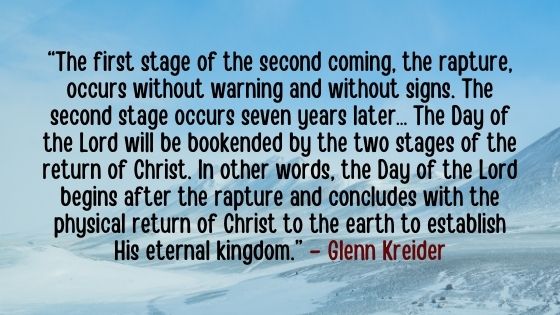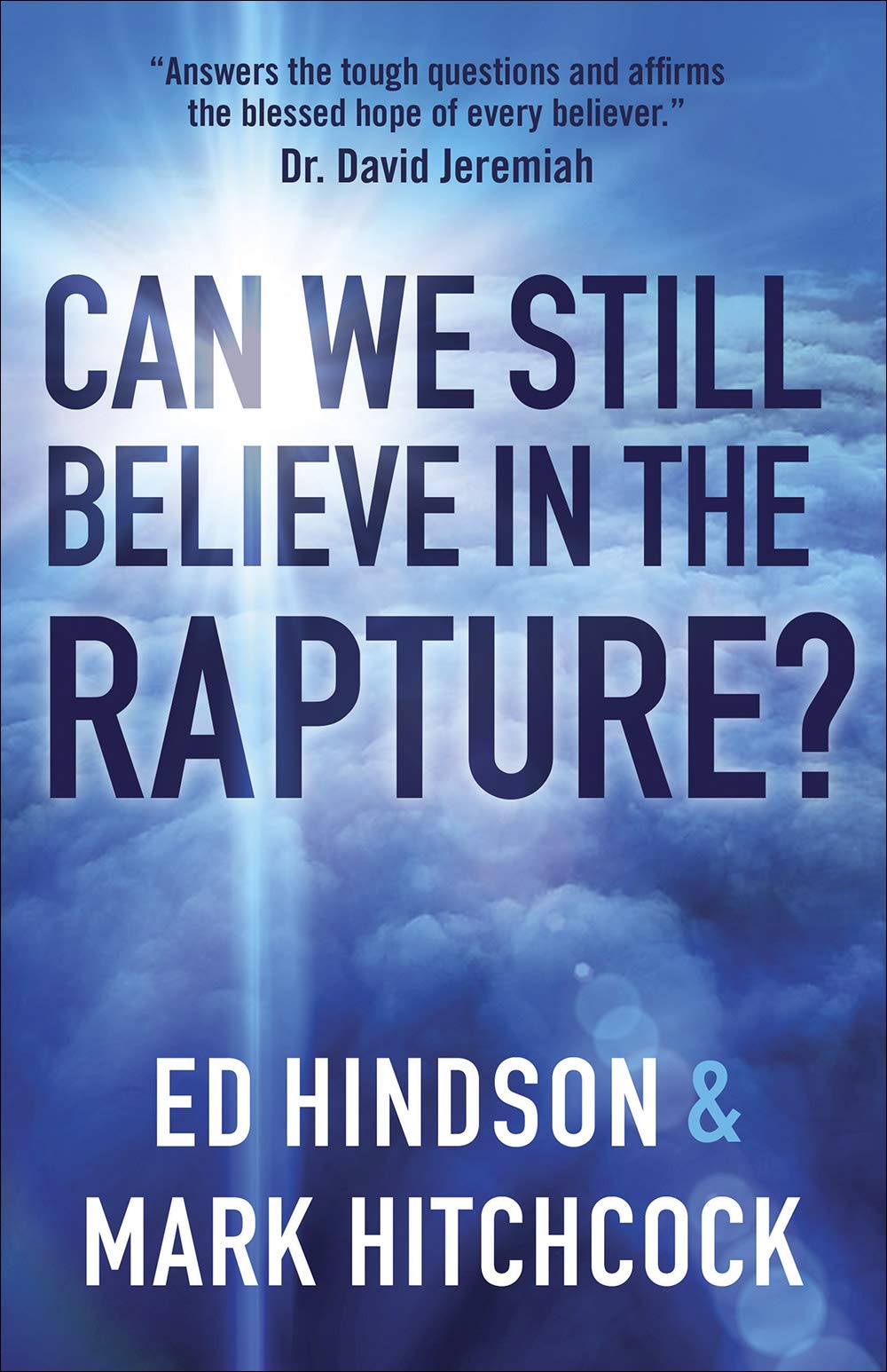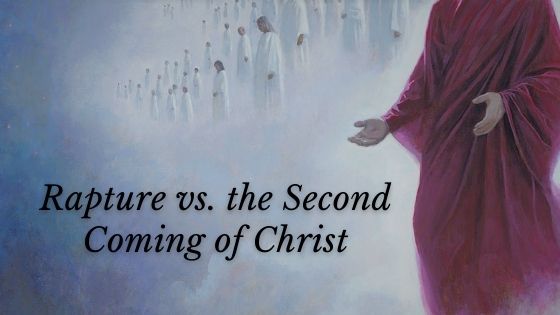Many Christians reject the pre-tribulation rapture due to a lack of understanding that the return of Christ occurs in two stages. Although the Bible seems to present only one event, an in-depth study of these passages shows that they describe two separate events.
On my YouTube channel, I posted a short video of Pastor John MacArthur differentiating between the Rapture and the Second Coming. Almost immediately, people started attacking the pre-tribulation rapture view. They strongly argued that nowhere in the Bible does it teach a pre-tribulation rapture.
In this post, I would like to present the differences between the Rapture and the Second Coming of Christ.
The Terminology Used
To bolster their view that the coming of Christ is one event, post-tribulationists point to the word used about the said event. They reject any attempt to separate this event into two stages because the same terms appear to be used interchangeably for Christ’s coming.
The three main Greek words used in the New Testament about Christ’s coming are parousia, epiphaneia, and apokalupsis.
Parousia means “coming,” “arrival,” or “presence.” This word is found fifteen times in the New Testament, including Matthew 24:27, 1 Thessalonians 3:13, 4:15, and 2 Thessalonians 2:8.
Epiphaneia is used about the second coming five times. It means “manifestation.” Among other passages, we find this word in 2 Thessalonians 2:8, 1 Timothy 6:14, 2 Timothy 4:8, and Titus 2:13.
Apokalupsis occurs five times and means “revelation” or “unveiling” (1 Corinthians 1:7; 2 Thessalonians 1:6-7; 1 Peter 1:7; 4:13; Revelation 1:1).
Arguments and Responses
A proponent of the post-trib view, George Eldon says, “The Parousia, the apocalypse, and the epiphany of our Lord are the same event. Christ’s Parousia is His return; His return is His coming; His coming is His second advent. The word used for our Lord’s return lends no support for the idea of two comings of Christ. On the contrary, it substantiates the view that the return of Christ will be a single, indivisible glorious event.”
This might well be a fair argument but it’s not a convincing one. There is biblical precedent for one event to unfold in several stages. For one, there were multiple aspects or phases of Christ’s first coming: His birth, His life, His death, His resurrection, and His ascension. These were all part of the first coming and were separated by periods of time.

In the same way, there are two aspects of the Lord’s second advent: the rapture which takes place in the air, and the return which begins in the air but ends with a return to earth.
Likewise, the Day of the Lord came upon Judah and various Gentile nations in the Old Testament, and the final Day of the Lord won’t come until the end times. Even in the end times, the Day of the Lord will be divided into a judgment phase (the Great Tribulation) and a blessing phase (the Millennium).
Differences Between the Rapture and the Return
There are three main rapture passages in the New Testament: John 14:1-3, 1 Corinthians 15:51-55, and 1 Thessalonians 4:13-18. Among the principal second coming passages are Zechariah 14:1-21, Matthew 24:29-31, Mark 13:24-27, Luke 21:25-27, and Revelation 19:11-21.
The differences between these two groups of passages are striking. They are so striking that they clearly point to two separate contexts.
Certainly, there are some similarities between the rapture and the return. Both events mention a coming, and both mention clouds, symbolizing a heavenly role in both. Yet, the differences demonstrate that these are two distinct stages of the second coming.
John Walvoord notes, “While it is evident that there are some similarities in the two events, these do not prove that they are the same. There are similarities also between the first and the second coming of Christ, but these have been separated by almost two thousand years.”
Below are some of the more significant differences between the rapture and the second coming of Christ as they are described in Scripture.
1) The Signs Given for Each Stage
Before the rapture, there are no signs that must take place. The rapture can happen at any moment. It’s a signless event. None of the rapture passages contain any mention of preceding signs. Believers are enjoined to be constantly looking for the rapture and “to wait” for it (1 Thessalonians 1:10).
Before the second coming, specific signs come to pass before Christ will return to earth (Matthew 24:4-28). The same event cannot logically be both signless and yet portended by numerous signs. That is clearly contradictory.
The simplest harmonization of these two different events supports a pretribulation rapture (which is signless and could happen at any moment). The many events taking place during the tribulation are best understood as signs leading up to the second coming.
2) The Place Christ Will Meet Believers
At the rapture, Christians will meet the Lord in the air (1 Thessalonians 4:16-17). Jesus never sets foot on the earth in any of the rapture texts.
At the second coming, Christ will come to earth with His saints, descending upon the Mount of Olives in Jerusalem (Zechariah 14:2-4; Revelation 19:14).
3) Who Removes People from the Earth
At the rapture, Christ Himself comes and takes believers out of the world. He comes for His saints (John 14:1-3; 1 Thessalonians 4:16-17).
At the second coming, Christ sends His angels to gather His elect on earth (Matthew 24:31).
4) Who Gets Taken and Who is Left
At the rapture, believers are taken from the earth while unbelievers are left behind (1 Thessalonians 4:17).
At the second coming, living believers on earth are left to enter the messianic kingdom while unbelievers are taken away to judgment (Matthew 13:41-42, 49-50).
5) When the Judgment Takes Place
At the rapture, no mention is made of God’s judgment or any distress taking place. Only promises of blessings and salvation are referenced.
At the second coming, tribulation, distress, apocalypse, and judgment are everywhere (Zechariah 14:2-4; Matthew 25:31-46; Revelation 19:11-21).
6) Timing of the Resurrection of the Dead
At the rapture, the resurrection of the dead occurs during Christ’s descent from heaven (1 Thessalonians 4:16-17).
At the second coming, a resurrection of believers who died during the tribulation takes place after Christ has descended on earth.
Note these order of events in Revelation 19:11-21; 20:1-5.
- The descent of Christ
- Christ slays His enemies
- The Antichrist (the beast) and the false prophet are cast alive into the lake of fire
- Satan is bound and thrown into the pit
- The resurrection of the saints
7) The People Involved
At the rapture, only believers see Christ and are involved (John 14:1-3; 1 Thessalonians 4:16-17).
At the second coming, all people will see Jesus coming and are involved (Revelation 1:7; 19:11-21).
8) The Rapture of Living Believers
In the rapture passages, the focus is on the snatching away of living believers on earth to meet Jesus in the air.
In the second coming passages, none of them contains a clear indisputable reference to the rapture. Also, no second advent passages, even the most detailed ones in Matthew 24 and Revelation 19, clearly mention a catching up of living believers to meet Jesus in the air. This omission is inexplicable if the rapture and second coming are supposed to happen simultaneously.
9) The Changes on Earth
At the rapture, all the relevant passages are silent about any topographical changes taking place on the earth.
At the second coming, massive changes in and on the earth result from Christ’s return (Zechariah 14:1-11).
Conclusion
While both the rapture and the second coming describe a return of the Lord and the same terms are used to refer to both, the dramatic differences in the various passages indicate they are describing two unique events that occur at separate times. The dissimilarities are too substantial to merge these two into a single event.
Jesus is coming again. On this point, all Christians agree. But that He is coming before the Tribulation without any warning, to take His bride to heaven is such great comfort.
Let us live looking for His return!
Disclaimer: As an Amazon Associate, I may earn a commission when you use any links on this page to make a purchase, but at no additional cost to you.
Reference: Can We Still Believe in the Rapture? By Ed Hindson and Mark Hitchcock
 Is the rapture Christian fiction or biblical fact?
Is the rapture Christian fiction or biblical fact?
Today, the hope that all believers on earth will be “caught up” in heaven is being challenged by new waves of criticism. Is the rapture really taught in the Bible? Can we really expect Jesus to gather up His followers before the Antichrist is revealed?
In this well-reasoned and thorough defense, prophecy authors Mark Hitchcock and Ed Hindson examine the concept, context, and consequences of the important and long-expected event known as the rapture.
Discover the answers to such questions as…
- What is the rapture—and is there any historical precedent for it?
- Why do some believers object to the idea of a rapture?
- Does the timing of the rapture really make a difference?
As you explore what Scripture says about the end times, you’ll get a grander glimpse of your glorious future and the deepest hope of every follower of Jesus.

